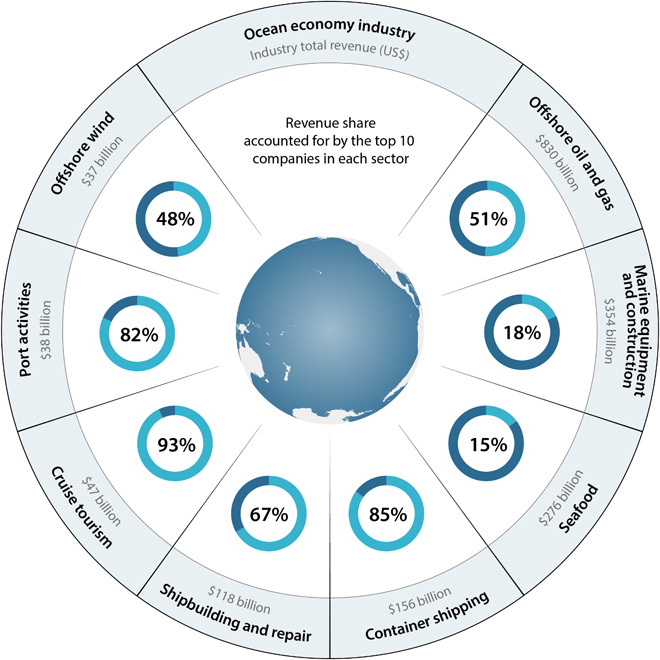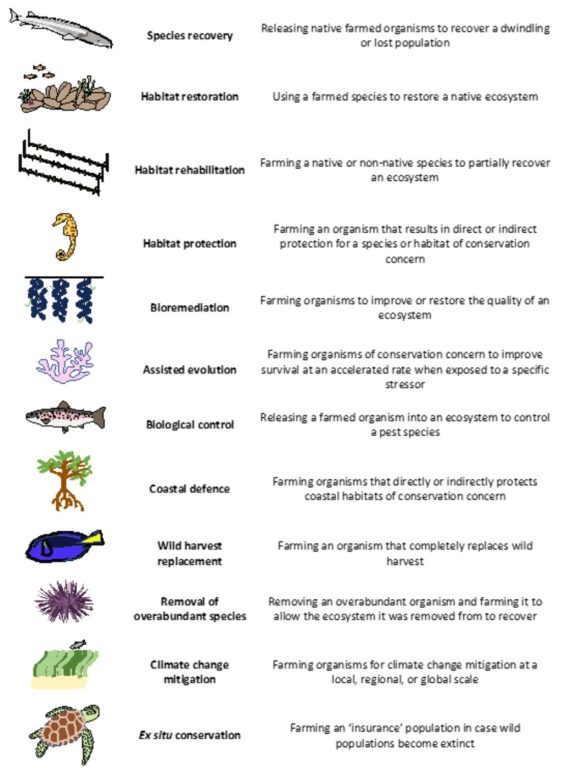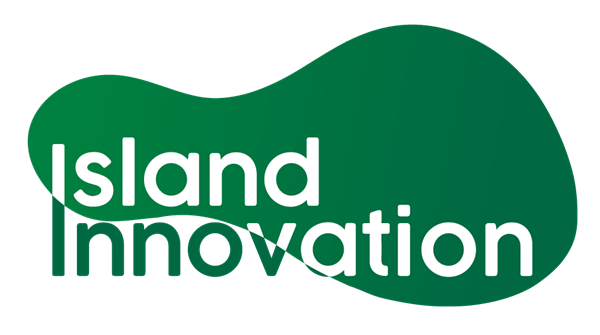The World Bank defines the Blue Economy as “the sustainable use of ocean resources for economic growth, improved livelihoods and jobs, and ocean ecosystem health” (World Bank and United Nations Department of Economic and Social Affairs, 2017). Such a lofty definition is appropriate, because the Blue Economy is an increasingly multidimensional space with many opportunities for innovative thinkers to advance sustainable and equitable economic and social goals. A concept of the 21st century, the Blue Economy covers three broad economic dimensions: coping with the global water crisis, innovative development and the marine economy (Wenhai et al., 2019). Within these fora, Blue Economy scholars put forth models that shift the focal point of contemporary resource management. Rather than focusing on challenges and scarcity, Wenhai et al. propound that a hallmark of Blue Economy academia has been ideating for long-term sustainable growth that prioritizes collaboration, trust and inclusion.
The United Nations declared 2021-2030 as the decade of the Blue Economy and stakeholders of all sizes and interests have been quick to make this declaration a reality (2017). Across the globe, public and private sector actors have begun developing strategies to efficiently and effectively increase buy-in and engagement in the Blue Economy. Sweeping policy overhauls from global leaders, the creation of ‘Blue Economy Silicon Valleys’ and an increased interest in corporate sustainability by investors are just a few of the larger cultural changes that have taken place in the years since the UN first introduced the term in 2012 (United Nations, 2022).
In 2021, John Virdin, Director of the Ocean and Coastal Policy Program at the Nicholas Institute for Environmental Policy Solutions at Duke University described the Blue Economy space as overpopulated with “big fish” (LUX Magazine, 2023). The findings of his recent study, “The Ocean 100: Transnational corporations in the ocean economy” suggest that just over 100 companies control 60% of the Blue Economy revenue stream (Virdin et al.,2021). Moreover, roughly half of those companies were from the oil and gas industry (2021). At the time of the study, 45% of ocean economy revenues came from the oil and gas industry, with marine equipment and construction and seafood coming in second and third with 19% and 15% respectively (2021). The problem with transnational corporate dominance stems from the way that this new frontier’s structure has already come to mimic the structure of the larger global economy and its extended supply chain. Geographical patterns of economic dominance have extended to the Blue Economy: already, progress towards sustainable goals has slowed, largely due to the continued influence of the TNCs. (2021). Larger companies with rigid processes are often not flexible enough to overthrow existing practices and ultimately, bring about more of the same.

Figure 1: “Revenue share accounted for by the 10 largest companies in each of the eight core industries of the ocean economy. The outer band indicates the respective industry total revenue in 2018 USD. Note that the level of concentration for “marine equipment and construction” is highly conservative due to the use of the higher end of total industry revenues, which we estimated between USD 83 and 354 billion”. Image courtesy of “The Ocean 100: Transnational corporations in the ocean economy” by Virdin et. al., 2021.
However, by contrast, startup companies and SMEs, with a lot of flexibility to innovate and pivot are able to break through the noise and push the industry towards long-term change. While funding is often perceived as a major challenge, startups interested in disrupting industries within the Blue Economy have a plethora of options when it comes to accessing capital. Incubators and accelerators all over the globe are looking to prioritize their business pathway and help them bring profitable solutions to market. From the Qingdao Blue Silicon Valley and the Yangtze River marine industrial parks in China to Norway’s Katapult Ocean and South Africa’s OceanHub Africa, more and more opportunities are being created to ensure the success of startups and push the Blue Economy towards its sustainable management goals (LUX Magazine, 2023; Virdin et al., 2021).
And those with the most to lose are not allowing the Blue Economy to pass them by. Island nations, who have historically had limited access to the support structures and collaborative networks needed to bring sustainable solutions to market, are creating their own fora to share ideas, provide support and create the solutions needed to protect their way of life. Palau Entrepreneurs for Growth, founded by Irene Olkeriil, recognizes the specific challenges faced by Pacific island entrepreneurs and has already become a lucrative and impactful support hub for Palau’s sustainable growth (Rodriguez & Diringer, 2023).
Opportunities to disrupt in the Blue Economy space are only limited to one’s imagination and ingenuity. Here’s a few examples of cutting-edge ideas and individuals working to change the Blue Economy landscape for the better.
Aquaculture and Seafood
Startups have been quick to explore the aquaculture space, reframing fishing methodologies and innovating towards stacking functions that help achieve other Blue Economy goals. This infographic by Overton et. al., highlights the multiple ways that innovations in the aquaculture landscape can combine entrepreneurial concerns with sustainable goals.

Figure 2: “Some types of industrial fish production benefit the environment by farming food in a specific way or place (modified from Overton et al. 2023)” Image courtesy of “12 ways aquaculture can benefit the environment” by Overton et. al., 2023.
Startups like Pesky Fish and Cascadia Seaweed are innovating within the Blue Economy space with Pesky Fish looking to reduce bycatch waste and allow fishers to sell directly to consumers while Cascadia Seawood is trying to combine carbon sequestration with kelp reforestation and commercial seaweed production (LUX Magazine, 2023).
Not all aquaculture is for human consumption, as Beneath the Waves, a U.S.-based marine company, is replanting and restoring local ecosystems as a means of building resiliency, protecting ocean industries and sequestering some carbon along the way (Rodriguez & Diringer, 2023). In the tropical context, the reforestation of mangroves and seagrass beds restores habitat for key regional species and replenishes the coastal buffer that protects the coastline from the destructive forces of hurricanes and other weather events.
Renewable Energy
When it comes to renewable energy and the clean energy transition, offshore wind farms can provide habitat for organisms whose natural habitats have been impacted by rising sea temperatures, tourism and pollution. As discussed by Liz Galst in “Turbine Reefs: Designing Offshore Wind Power to Improve Habitat for Marine Life”, experimenting with different hardscapes for the turbine bases has the potential to reduce long-term pollution due to material degradation and optimize habitat for a wide array of marine species. Startups interested in disrupting here should be thinking about new building materials and incorporating technologies that address the habitat needs of different species.
Other segments of the energy sector are rife with opportunities for startups. Ocean Thermal Energy Conversion, currently based in Gran Canaria, is working with its partners to globally innovate the thermal energy landscape. Working in the Atlantic and the Caribbean, OTEC is finding new ways of harnessing the naturally high temperature of tropical waters as a source of ocean thermal energy(Rodriguez & Diringer, 2023).
Research and Development
Even the most minute seeming microalgaes hold worlds of potential. Recent research suggests that microalgaes could be the latest frontier for a host of industries. Microalgaes’ potential to sequester carbon is being researched and explored, with cross-sector collaboration viewing this sequestration ability as opening the door to the creation of algae-based biomass fuel sources. Additionally, researchers recently mined data that provided insights on the metabolic regulation and productivity of microalgae. These insights have helped researchers pinpoint specific microalgae extracts that have antioxidant and anti-aging properties(Sustainable Beauty Products from Microalgae Give Blue Economy a Makeover | ALGAE4A-B Project | Results in Brief | H2020 | CORDIS | European Commission, 2020). From cosmetics to medicine, our understanding of the untapped potential of microalgae is yet to be fully explored.
Microalgae are not the only ocean organisms whose greater potential are still being discovered. Sargassum is being explored as a biofuel and as a means of carbon sequestration. In Barbados, Rum & Sargassum is using the increased amounts of sargassum in the Caribbean to create a cheaper, locally-produced alternative to fossil fuels (Rodriguez & Diringer, 2023). Further up the supply chain, SOS Carbon in the Dominican Republic is reframing the algal blooms in a positive light, developing technology that views the seaweed as a carbon offset that can be harvested and then used to make bioplastics, biofuels and other materials (Rodriguez & Diringer, 2023).
Waste Management
Pollution solutions are a growing space within the Blue Economy, as startups are looking to tackle point-source pollution of all forms. Startups like Recyglo are working to disrupt the waste management sector within the Blue Economy, pinpointing a major source of oceanic plastic pollution and working to bring modern recycling to Southeast Asia (LUX Magazine, 2023). Conversely, other startups that are more aquaculture focused, are stacking functions to include bioremediation. Shellfish startups are exploring ranching in areas of high agricultural runoff in the hopes of cutting their costs by allowing their crop to filter the water, take out excess nutrients and inadvertently protect the habitat from toxic algal blooms and eutrophication.
There are a myriad of possibilities and avenues to make them a reality for interested entrepreneurs. The Blue Economy is teeming with opportunities, with the most recent pivot being a global interest in closing the ocean information gap. With more than 80% of the ocean still to be mapped and observed, Blue Economy scholars are now turning their focus towards renewed oceanic exploration and making the existing data more accessible to stakeholders and the general public (NOAA, 2023). The introduction of Big Data to the Blue Economy space would allow for increased accuracy in modelling and strategy. Longitudinal weather data can help determine the most profitable days for certain renewable energy technologies; watershed related research can help optimize wastewater treatment and predict the sources of pollutants.
To learn more about the Blue Economy, check out our other articles on trends within the Blue Economy and tune in to our limited coverage of our in-person event on the Blue Economy in Madeira, Portugal.




